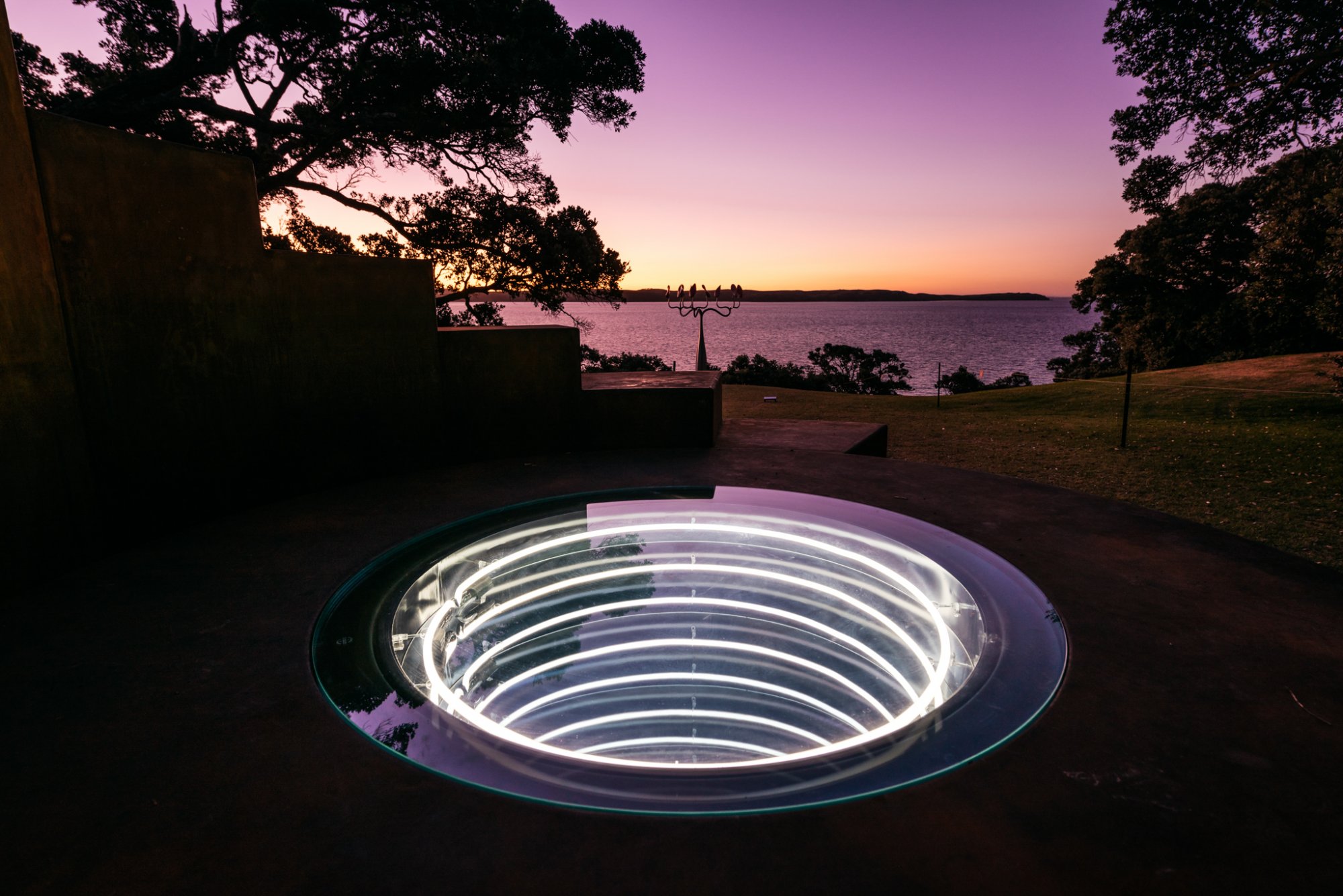Robert Jahnke Ground Zero, 2019
Corten steel plate, aluminium and glass and neon, 3420 x 3420 x 2000 mm.
Ground Zero, alternatively known as ‘surface zero’, is a parody of a term most often associated with the epicentre of intense activity or change. It is also used in relation to natural disasters and epidemics to mark the locus of destruction and damage. It is used in this instance to mark a centre of change where land that was once owned by Māori is no longer under Māori ownership.
At the centre of the Ground Zero sculpture is an illuminated round neon located within a circular drum of mirrors that create the illusion of a reflection of the circle that appears to reduce in size and to disappear into black void, much like the concentric circles of a bullseye. People are encouraged to ascend and descend the stairs of the sculpture or sit on them; walk around the neon on the cylindrical platform and even walk over the illuminated neon drum; over the epicentre or the bullseye that marks an area of land in which Māori have zero interest; the land on which the sculpture is located.


